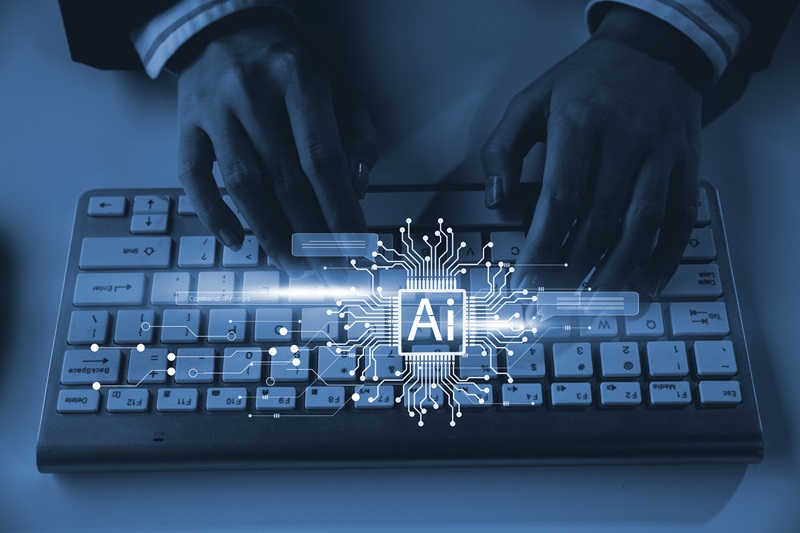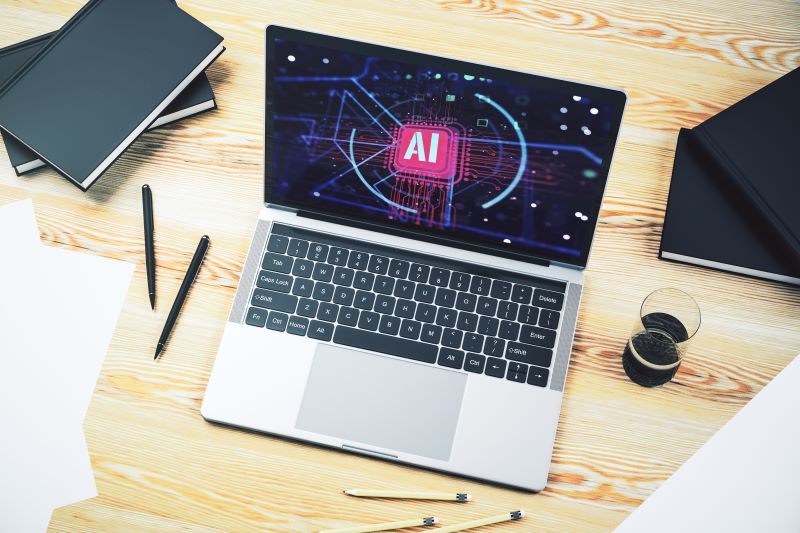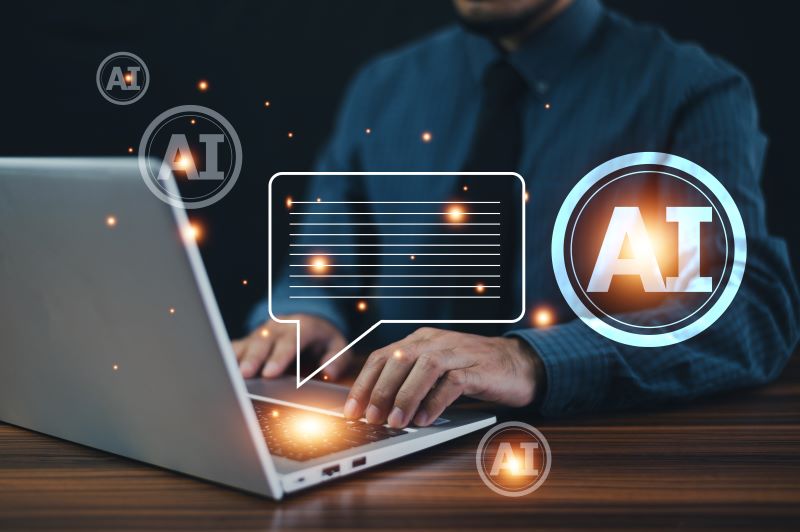Learn How to Use AI for Web Scraping
In this digital age, where over 2.5 quintillion bytes of data are generated annually, most of this data is publicly inaccessibly, yet potentially invaluable. How then can businesses access business intelligence, customer sentiment, behavioral data, rivals’ pricing strategies, and other key information? The answer lies in just two words: Data Scraping. This task has been made immeasurably easier by the invention of AI website scrapers.
Table of Contents
Traditional methods of data extraction are often ineffective because of the dynamic nature of web content. Websites are updated frequently, and some information, such as pricing and customer behavior, alters moment by moment. This makes it vital to harness the superior data wrangling power of AI.
This is where AI web scraping comes into play. Unlike standard scraping tools, an AI website scraper leverages advanced algorithms to adapt to changes and extract data more efficiently and accurately.
Understanding AI Web Scraping and Scraping APIs

Web scraping is the process of automatically extracting data from websites. This technique is pivotal for gathering large amounts of information quickly. Companies including eBay, Amazon, Opodo, and other e-commerce sites use scraping to monitor visitor behavior and target them with products they’ll be interested in, for instance.
A scraping API (application programming interface) simplifies this process by providing a ready-to-use tool that can handle the complexities of web scraping for you. Scraping Robot, for instance, is designed to make AI web scraping as straightforward as possible, even for those new to the technology.
You need have no data science experience or expertise to see excellent results at lightning speed. The API data scraper can pull data from the API of any website, rather than having to parse raw HTML tags and code. This makes it quicker, better targeted, and more accurate.
How does data scraping work?
Data scraping is performed by bots, which crawl targeted websites and extract data from their underlying HTML code or API. These systems then use this data to populate databases or spreadsheets, presenting the information in a digestible format. Some systems can also perform data analytics, identifying trends or highlighting key insights.
The use of AI makes this a much more targeted process, rather than a hit-and-miss affair. Systems like Scraping Robot can be used off-the-shelf because they contain pre-programmed algorithms designed to source specific types of data. Such scrapers can also be customized to their client’s preferred use cases and data sources.
Advantages of AI-Powered Web Scraping

There are numerous benefits to using an AI to scrape websites. Here are the top six:
Adaptive data extraction
One of the primary advantages of using an AI scraper is its ability to adapt. Traditional scrapers rely on fixed rules. However, an AI for web scraping can learn and adjust to the structure of a website, allowing it to handle websites that frequently update or change their layout.
Handling complex data patterns
AI-based web scraping is also adept at handling complex data patterns. Such systems can identify and categorize data in sophisticated ways to deal with a variety of data types and structures. This is a significant advance over basic scraping techniques.
User specified task management
Data scrapers can be rather blunt instruments. By incorporating sophisticated AI-powered algorithms, tools like Scraping Robot can be targeted on highly specific tasks such as collating customer sentiment about a product (in text, audio, and video), building a database of potential B2B clients, or analyzing a competitor’s pricing strategy.
An accessible no-code solution
You don’t need to employ expert coders, hackers, or data specialists to use an intuitive AI data scraping platform. The interfaces are designed to be straightforward and easy to use, with results displayed in easy to interpret dashboards and reports.
A time and labor-saving solution
Both employee time and research budgets can be optimized by employing an AI-powered data scraper. These tools can handle a huge volume of data accurately, using automation to free employees to work on strategic thinking, creativity, and interpersonal communication.
Circumvent anti-scraping measures
Tools such as Scraping Robot can dodge some of the anti-scraping measures some websites employ. Assuming you’re sourcing data ethically, there’s no harm in gathering aggregated information to better direct your marketing efforts or improve your products and services. Using an AI data scraping API allows you to do this.
Choosing the Right AI Tool for Web Scraping

When selecting an AI tool for web scraping, consider factors like ease of use, cost, and the level of support offered. There will inevitably be a learning curve to negotiate, as with any new software tool. Make sure you have the support you need to bring employees up to speed.
An AI web scraper offered free of charge might be suitable for beginners looking to experiment with basic projects. However, more complex research will require a more robust, AI-based web scraping service.
Here are some questions to ask both yourself, and your potential supplier:
1: What volume of data can this system handle?
2: What data sources can be scraped?
3: Does the system have an intuitive interface?
4: Can it deliver insightful reports?
5: Can it output data in XLS, JSON, or database-compatible formats?
6: Is it affordable and scalable?
7: How good are the support and training resources?
If you’re happy with the answer to all seven questions, you may have found the perfect AI data scraping tool.
How Data Scraping AIs Deal with Data Sourcing Challenges

There’s something of an arms race between sites that try to protect the data they hold, and companies trying to scrape that data to generate insight. Here are some of the main data scraping obstacles and challenges:
Proxy management and rotation
When scraping websites, it’s common to use proxies (intermediary servers) to hide your real IP address and avoid getting blocked. Managing these proxies and switching between them to prevent detection can be complex. A good AI-powered data scraper can cycle proxies to evade such measures.
Server management
Running web scraping operations often requires maintaining servers that can handle high volumes of requests and process data at scale. Your AI data-scraping platform should provide the server infrastructure to make this possible.
Browser scalability
Scraping at scale might require simulating multiple browser sessions. Handling the load and ensuring that the virtual browsers operate efficiently is something Scraping Robot manages with ease.
CAPTCHA solving
Websites often use CAPTCHAs (Completely Automated Public Turing test to tell Computers and Humans Apart) as a defense against bots. Scraping Robot has mechanisms in place to solve these puzzles, allowing uninterrupted scraping.
Adapting to anti-scraping updates from target websites
Websites frequently update their anti-scraping measures to block scrapers. Good data scrapers keep track of these updates and adjust their scraping strategies accordingly.
By handling these technical challenges, Scraping Robot allows its users to focus solely on extracting and using the valuable metadata from the websites they are scraping.
Best Practices for AI Web Scraping

Implementing AI web scraping involves following best practice to ensure efficiency and accuracy. Here are seven key practices to adhere to:
-
- Regularly update your AI models to adapt to website changes.
- Validate the data collected to ensure its accuracy and relevance. This means checking it is accurate and properly formatted.
- Be aware of ethical and legal considerations to avoid violating terms of service or data privacy laws. Follow UK and European GDPR restrictions and the CCPA (California Consumer Privacy Act) in the US.
- Limit the amount of scraping you apply to each site to avoid overwhelming target servers.
- Keep AI models updated to allow for the dynamic nature of web content. Remember that an AI model is only as good as the data it has been trained upon.
- Ensure Errors are handled robustly. Make sure your data scraper knows how to handle errors, including connectivity dropout, HTML changes, and unexpected data formats. Avoid arduous, time-consuming manual data cleaning.
- Enable data security measures. Implement systems to ensure that the third-party data you obtain is kept safely and made accessible only to those with appropriate clearance. Data should be used judiciously and anonymized where possible.
Data Scraping: Some Final Thoughts

The integration of AI into web scraping tools has revolutionized the way data is collected from the internet.
With the ability to adapt to the dynamic nature of websites and handle complex data structures, AI-enhanced tools like Scraping Robot provide a significant edge in data extraction technologies.
Such tools can be as beneficial to consumers as well as the businesses that serve them. Ad servers can use data scraping to offer ads that users are more likely to click upon. Streaming services learn customer habits and recommend films and shows they’ll enjoy. Brands improve their product offerings by identifying common issues their customers have raised.
By choosing the right AI website scraper and following best practices, you can maximize the potential of AI to enhance your data sourcing and deliver more actionable insights.
The information contained within this article, including information posted by official staff, guest-submitted material, message board postings, or other third-party material is presented solely for the purposes of education and furtherance of the knowledge of the reader. All trademarks used in this publication are hereby acknowledged as the property of their respective owners.
